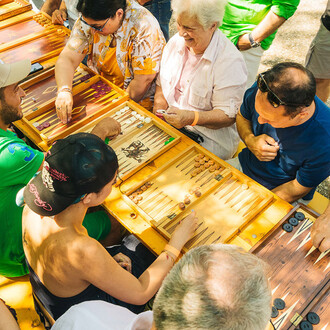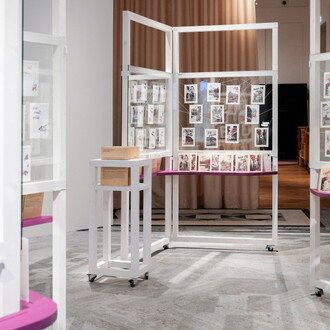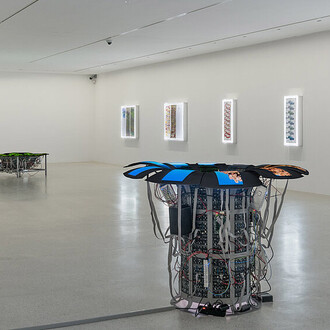Richard Gerstl (1883–1908) stood at the beginning of a highly promising career when it was cut short by his early death. Along with painting, Gerstl exhibited an extraordinary interest in philosophy, psychology, music and literature. His close contact with the circle of musicians surrounding Arnold Schönberg played a central role in Gerstl’s life. His friendship with Schönberg came to an abrupt end in the summer of 1908, when it was discovered that Gerstl was conducting a love affair with the composer’s wife Mathilde Schönberg. As a result, Gerstl was ostracized by the Schönberg circle and, lonely and isolated, plunged into a depression which culminated in his suicide in the night of 4th/5th November 1908.
Owing to Gerstl’s withdrawn lifestyle and his stubborn refusal to present his works in exhibitions during his lifetime – and because his paintings were kept in a depot after his death and were only presented to the public by Otto Kallir-Nirenstein in 1931 – the international art world still considers him somewhat of an artistic outsider with a largely unknown oeuvre. The solo exhibitions of his works presented in 2017/18 at the Schirn Kunsthalle Frankfurt and the Neue Galerie in New York, however, can be regarded as milestones in the rediscovery of the artist. More than 25 years after the last monographic exhibition of his oeuvre in Austria, the Leopold Museum dedicates a comprehensive presentation to Richard Gerstl, which includes an unprecedented exploration of his connections to contemporaries, role models as well as to artists of the present. The approximately 70 extant works by the artist, 16 of which are owned by the museum thanks to the collector Rudolf Leopold, are testament to his increasing rejection of any type of academic painting traditions. Gerstl’s method of working illustrates a great readiness to embark on artistic experiments which led him from Pointillism via an expressive, gestural manner of painting towards a dissolution of forms. Gerstl’s style of painting was likely inspired by the works of Edvard Munch, Vincent van Gogh, Pierre Bonnard and Lovis Corinth.
The presentation offers not only an in-depth exploration of Gerstl’s possible role models and the artists of his time but also looks at his oeuvre in connection with contemporary artists.
The spectrum of artists who appreciate Gerstl – and admire especially his Expressionist late oeuvre – ranges from Martha Jungwirth to Georg Baselitz and Paul McCarthy. Some of the aforementioned artists have reacted to the ten canvases by Gerstl presented by Werner Hofmann at the 1956 Venice Biennale. In this manner, his oeuvre enters into an exciting dialogue, both in terms of content and formal esthetics, with congenial pictorial worlds by other artists: the exhibition’s approach of embedding Gerstl’s oeuvre within the art of the 20th and 21st centuries helps to links the past with the present.
















